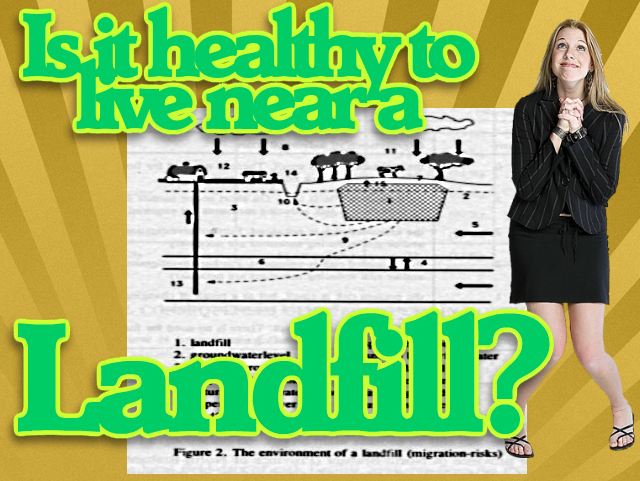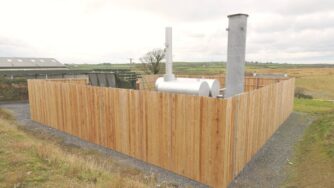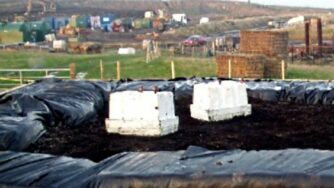Health Effects of Landfill and Landfill Gas

The context for the “Emissions and Health Impacts Associated with Waste Management” report, is a UK Government Strategy Unit Report commissioned to assess health effect of landfill (if any was found to exist) from Enviros Consulting.
This report was prepared at the request of the Strategy Unit at the UK Cabinet Office, and can be downloaded from the UK National Archives. It contains information setting emissions from waste management in context.
Information is provided which compares emissions to air, water and land from waste management with other emissions in the UK. The emissions to air associated with different waste management options per tonne of waste processed are set out.
Information is also provided on the health risks associated with waste management and the landfill gas emissions it causes.
These are compared with other risks to health.
The findings of the report are summarized in the following News Release, issued by Department for Environment, Food and Rural Affairs on 16th August 2001. As far as we are aware (March 2019) this remains the most recent study of its kind which has been done in the UK.
LARGEST EVER STUDY INTO HEALTH OF POPULATIONS AROUND LANDFILL SITES PUBLISHED
A major study into the possible health risks for populations living around landfill sites is published today. The Small Area Health Statistics Unit (SAHSU) studied the rates of birth defects, low birthweight, stillbirths, and of certain cancers in populations living within 2km of landfill sites. The group examined 9,565 landfill sites that were in operation between 1982 and 1997. It is the most extensive study into landfill sites anywhere in the world.
The study was commissioned in response to public concerns about the possible health effects of living close to landfill sites. SAHSU, an independent unit funded by government departments, found that 80 per cent of the population lives within 2 kilometres of a landfill site.
Results on birth outcomes of the SAHSU study will be published in the British Medical Journal on 17 August. The key findings are:
- The study found no increase in rates of cancer in populations living close to landfill sites.
- The rate of congenital anomalies in populations living within 2km of all landfills is one per cent more than expected.
- The rate of congenital anomalies in populations living within 2km of landfill sites containing hazardous waste is seven per cent more than expected.
- Rates of low birth weight babies are around five per cent higher near to landfill sites, but there is no difference in the rate of stillbirths.
rates of birth defects did not increase, and in some cases reduced, after landfill sites were opened in certain areas.
The SAHSU study says that it is not clear at present that landfills are causing these effects and that other explanations are possible. These could include limits in the information available for the study, or the possibility that the study did not completely take into account other factors which increase the risk of birth defects or low birth weight. They recommend that further work is done to distinguish between these possibilities.
The Government's expert advisory Committee on the Toxicity of Chemicals in Food, Consumer Products and the Environment (COT) noted that the findings for the birth outcomes were not consistent and that the study provided no evidence that rates of anomalies increased after landfill sites opened. They commented that this made it difficult to draw conclusions about the possible health effects of landfill sites on the basis of this study. The COT recommended that the finding of a 7 per cent higher rate of congenital anomalies around special waste sites merited further investigation, whether or not it was related to the presence of the landfill sites.
Dr Pat Troop, Deputy Chief Medical Officer, said at the time:
“This is an important study and the Government is taking it seriously. The results are difficult to interpret and we need to put them into context. We cannot say that there is no risk from landfill sites, but given the small numbers of congenital anomalies and the uncertainties in the findings, we are not changing our advice to pregnant women and they should continue with the recommended ante-natal programme.”
Conclusion: Is there a Health Effect of Landfill which might put the local residents at a higher risk of ill-health?
The report was interpreted as showing that under current stringent EU wide regulatory controls there is no significant risk of health impacts from waste management operations in the UK.
 |
Further papers are available in the:
“[simpleazon-image align=”right” asin=”B001SAMIN8″ locale=”us” height=”110″ src=”http://ecx.images-amazon.com/images/I/61X9505mquL._SL110_.jpg” width=”79″][simpleazon-link asin=”B001SAMIN8″ locale=”us”]Leachate, Gas, Operation and Health Effects in Landfills, Proceedings Volume II (Sardinia 99 Seventh Waste Management and Landfill Symposium, Volume 2)[/simpleazon-link]“:
Landfill Site Permit Applications – The Role of Risk Assessments in Emissions Control
Landfill site emissions risk assessments are a mandatory requirement for environmental permit applications (previously known as Landfill Site PPC Applications). They identify possible hazards to the environment and public health from landfill gas and leachate. The procedure calls for a thorough examination of landfill emissions, including assessments of the effects on the air, groundwater, and surface […]
Understanding Landfill Gas Risks Before Buying Property Near a Landfill
Buying Real Estate: Understand Landfill Gas Risks before buying land near a landfill! Landfill sites can produce methane, and that can continue for many years. It has been a known issue for years. Site operators used to see small landfill gas fires as minor problems when they first started to happen in the 1970s in […]
Landfill Gas Migration Defined and Explained
Landfill gas migration is defined as the process which occurs when the landfill gas generated within a landfill moves from the site of original waste deposition out of the landfilled waste, into the surrounding environment. This may take place as a result of the gas flow induced by the positive gas pressure produced by the […]
Fugitive Emissions of Methane and Landfill Gas Explained
It is well known that fugitive emissions of methane and landfill gas occur when methane escapes from production facilities, wells, pipes, compressors and other equipment associated with coal mining or natural gas extraction, landfills, and biogas plants. It is obviously very important to reduce fugitive emissions to an absolute minimum. Why are Fugitive Escapes of […]








